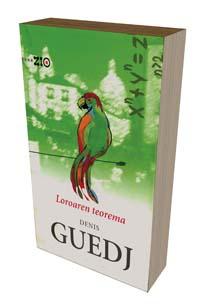Pleasurable mathematics
Parrot Theorem

In his novel The Parrot's Theorem ("Le Théorème du perroquet"), Denis Guedj, with the excuse of a detective investigation, tells us some anecdotes of the history of mathematics. Of his pages, in addition to the protagonists who gather around a Parisian bookstore, important mathematicians such as Euklides, Fermat or Galois pass.
Symmetry
Marcus du Sautoy, professor at the University of Oxford, enviably combines her research and outreach work. In addition to publishing many articles in the best mathematical journals, he is a contributor to the BBC in recent years, for example, author of a series of videos about the history of mathematics that can be seen on YouTube. He has also written a couple of highly successful books for mathematical disclosure. One of them is the book Symmetry. Du Sautoy's research area is the so-called group theory, the tool that uses mathematics to measure symmetry. In this book, taking advantage of some anecdotes of his life, Du Sautoy explains with mastery how groups appear in the investigation of symmetry and how we can take advantage to identify all kinds of symmetries of objects. It is especially interesting to study the symmetry of the geometric motifs present in the tiles of the Alhambra.
Math for fun
Martin Gardner was the king of recreational mathematics. In the 20th century. Philosopher of education, approached mathematical games for his fondness of magic. For 25 years he devoted himself to the writing of the column "Mathematical Games and Recreations" in the journal Scientific American, obtaining a huge success. After collecting the articles in this column, he published 15 books. What we recommend here is one of them, Mathematics to have fun ( Entertaining Mathematical Puzzles). Gardner proposes in his book a series of riddles related to mathematics. They address most areas of mathematics: arithmetic, geometry, probability and topology, among others.





